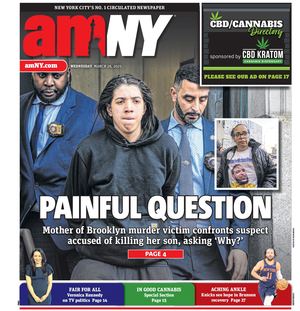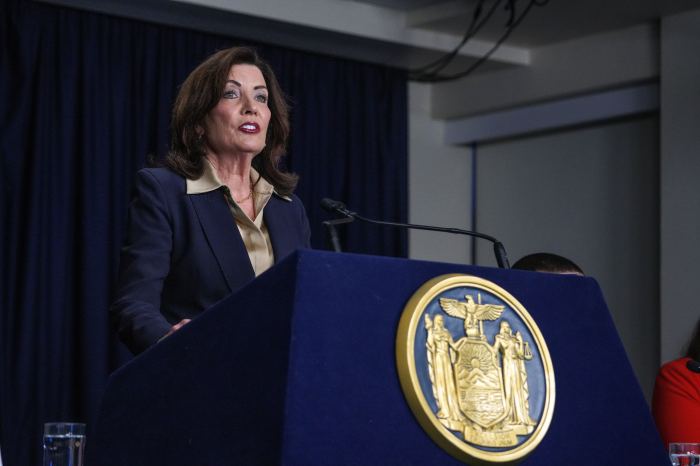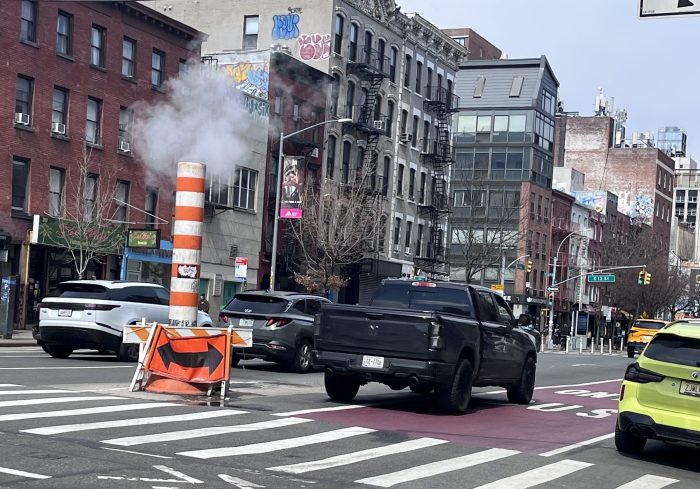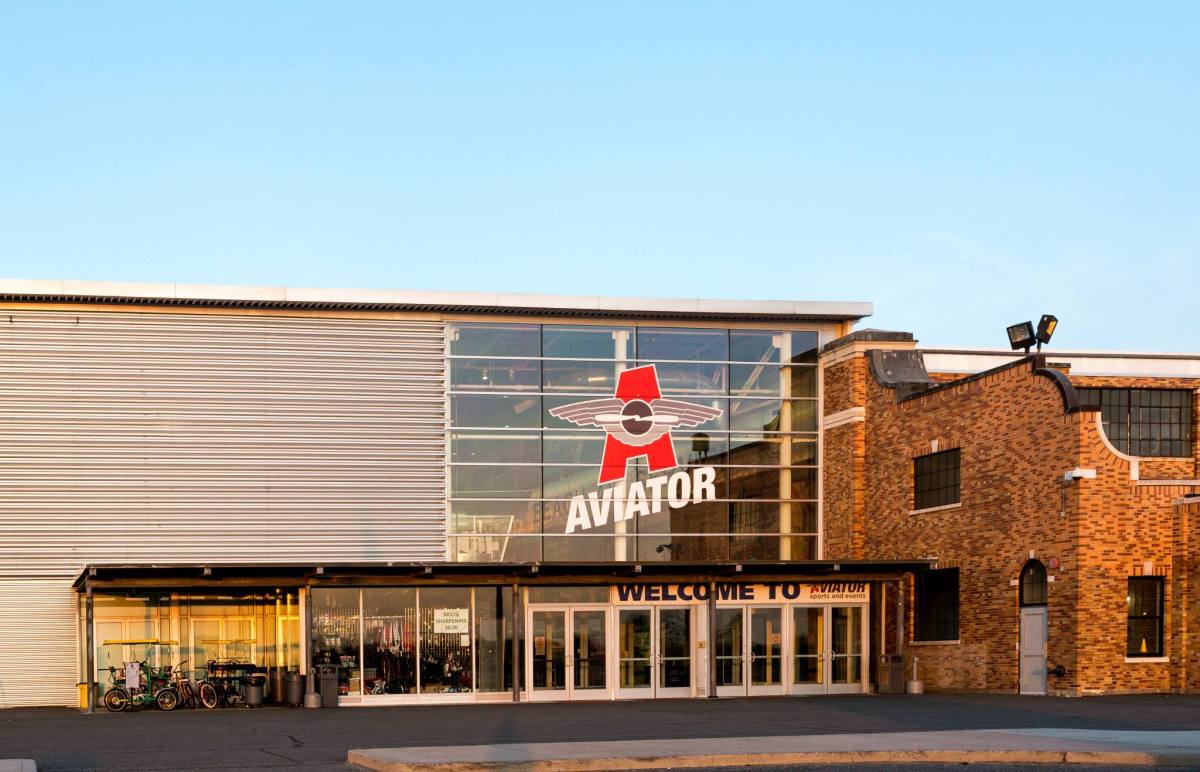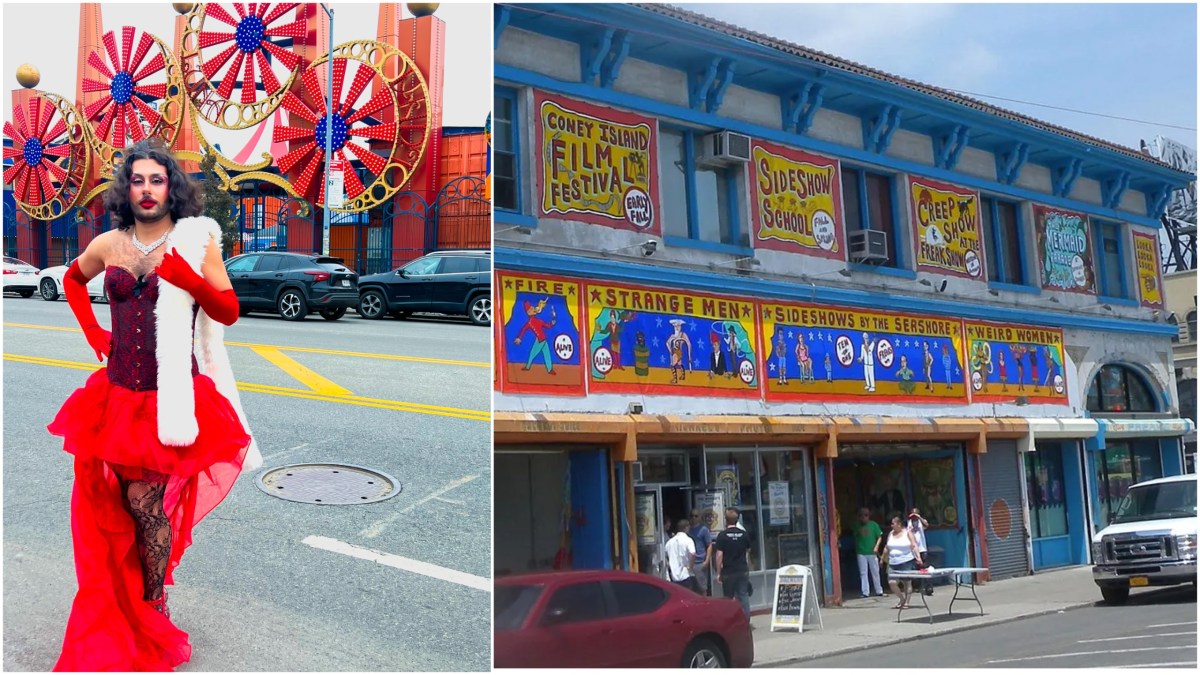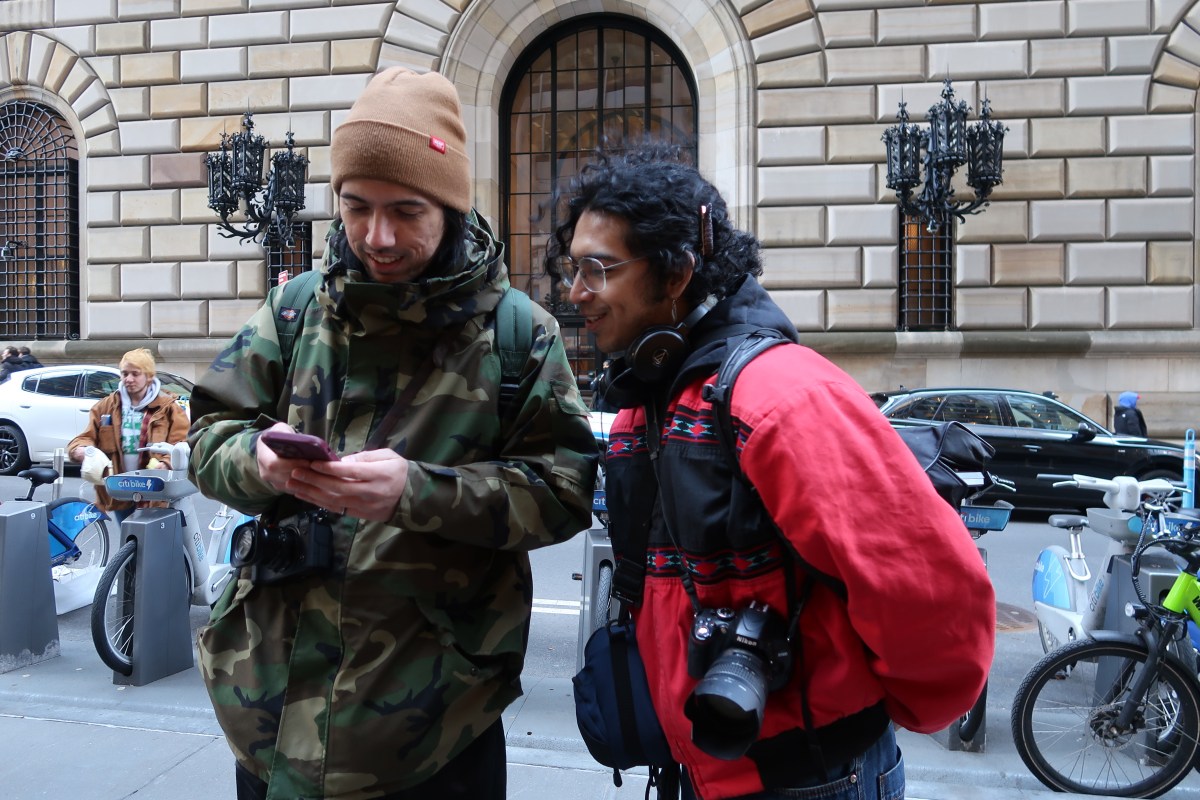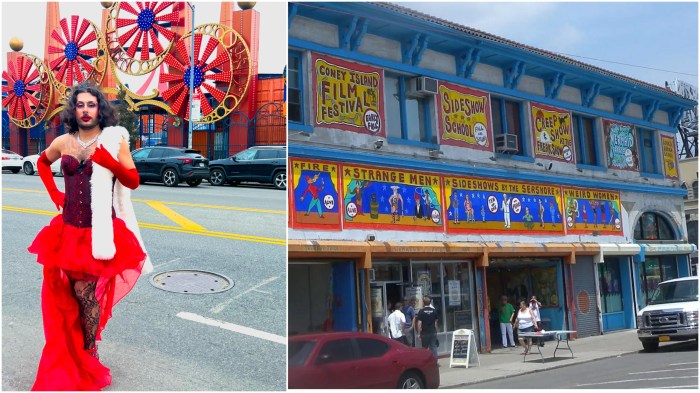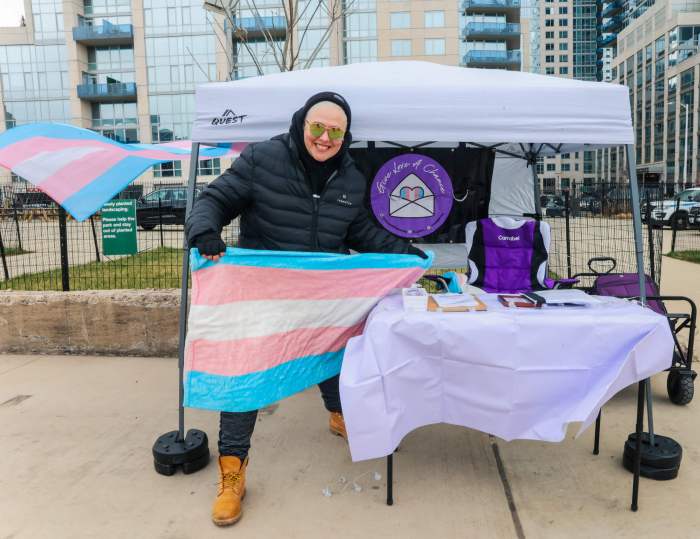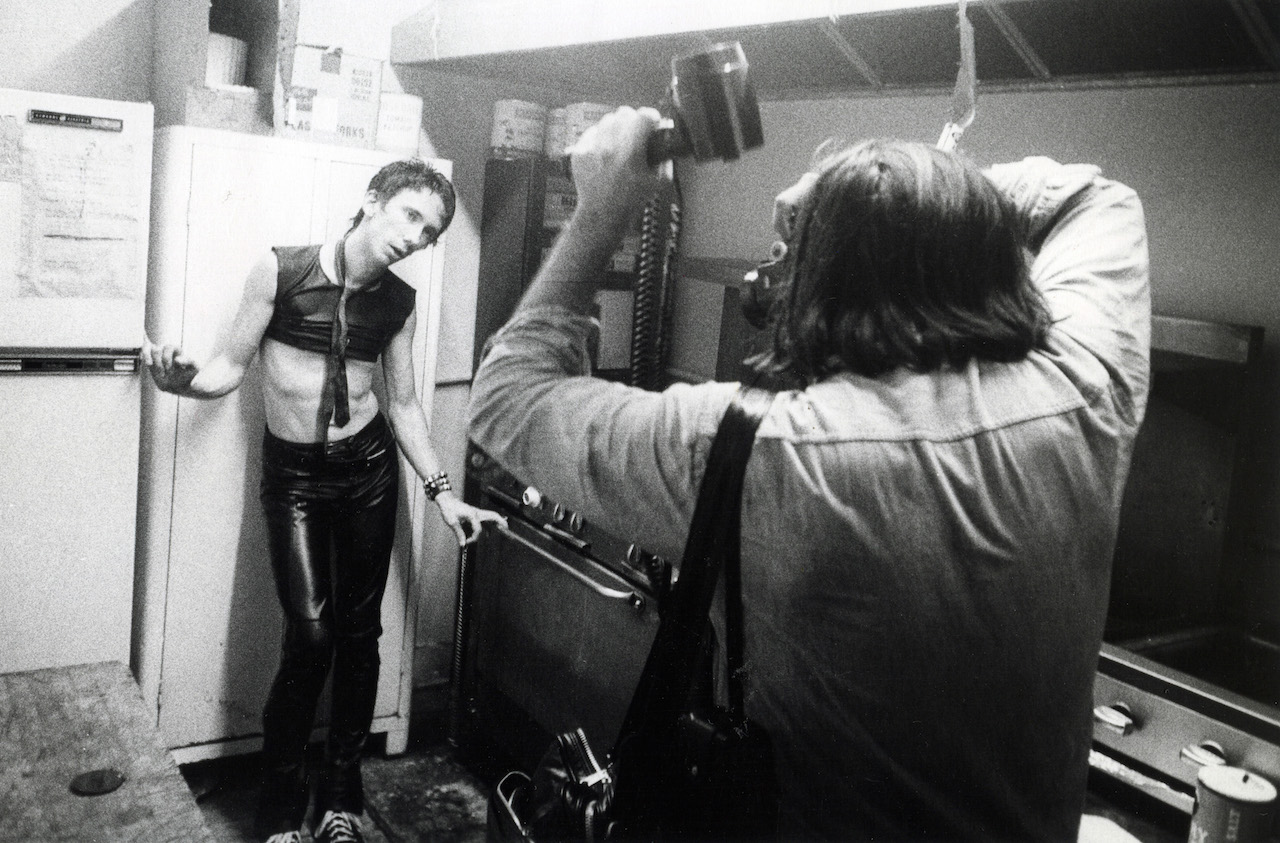
BY TINA BENITEZ-EVES | In its early days, CBGB actually had a kitchen where burgers and chili were cooked up. But it eventually became a dressing room, and many never imagined grabbing food inside the place ever again.
However, inside Terminal C at Newark Liberty International Airport, travelers can now get a pseudo-taste of the now-defunct night club — or a turkey club sandwich, French onion soup or caprese salad — at CBGB L.A.B., or lounge and bar, a new restaurant that opened last December.
The open beer garden setup is adorned with a white-and-red CBGB awning, resembling the one that hung at 315 Bowery for more than 30 years, along with posters inside of Joey Ramone, Debbie Harry and Sid Vicious.
CBGB L.A.B., though, isn’t a “rebirth” of the famed East Village punk venue, but a theme restaurant in a very unlikely spot.
It’s part of a $120 million renovation of the airport terminal by food-service company OTG Management, including more than 55 new dining venues, with some concepts created by more than 20 chefs.
But CBGB L.A.B. doesn’t have any CB’s-inspired sandwiches or other dishes. Deviled eggs are called simply deviled eggs. Patrons can even order via iPad. But you need a plane ticket to get in.
“They have a bar like any other bar at the airport and a sandwich menu. It could be like any other place,” said Lenny Kaye, the guitarist for The Patti Smith Group, told The Villager. “It’s a design opportunity that appears to be lost. It would be nice if they had bands play there or if they had a bathroom attached that reflected some of the CBGB facilities.”
On his way through Newark, Kaye recently stopped in to the restaurant for a breakfast sandwich, and found the place, with its standard fare, didn’t evoke much of the original venue’s true spirit.
“I couldn’t resist,” Kaye said. “It was so airport generic, in a way. It didn’t seem to be anything but a lot of photos on the wall that didn’t make it look like the club might have looked. It seemed weirdly irrelevant to CBGB’s legacy.”
Smith and Kaye were the last act to perform at the venue when it closed on Oct. 15, 2006. He recalled that, in the early days of CBGB, there was a makeshift kitchen where hamburgers and chili would be served up, in what would later become a dressing room. Karen Kristal, then-wife of CBGB founder Hilly Kristal, even made Kaye burgers in the 1970s.
“There’s kind of an odd full circle that you can go to a Newark restaurant and have a hamburger at CBGB,” Kaye said, adding that the hood of the stove could still be seen in the room throughout the life of the gritty Bowery venue.
Since CBGB’s doors closed for good nearly 10 years ago, it has been kept “alive” through merchandise, a CBGB music festival in New York, and its soiled stage — still intact at 315 Bowery at the John Varvatos boutique.
“A lot of kids had no parents in those days,” said Andy Shernoff, a founding member of The Dictators, at a recent punk panel at Howl! Happening gallery, at 6 E. First St. “Hilly had an open house.”
Now, the House that Hilly Built is an airport restaurant, with the possibility of more CBGB-themed venues on the way. Tim Hayes, founder and executive director of the CBGB Festival, and several other investors bought the brand name in 2011 and now are planning an expanded, global branding campaign.
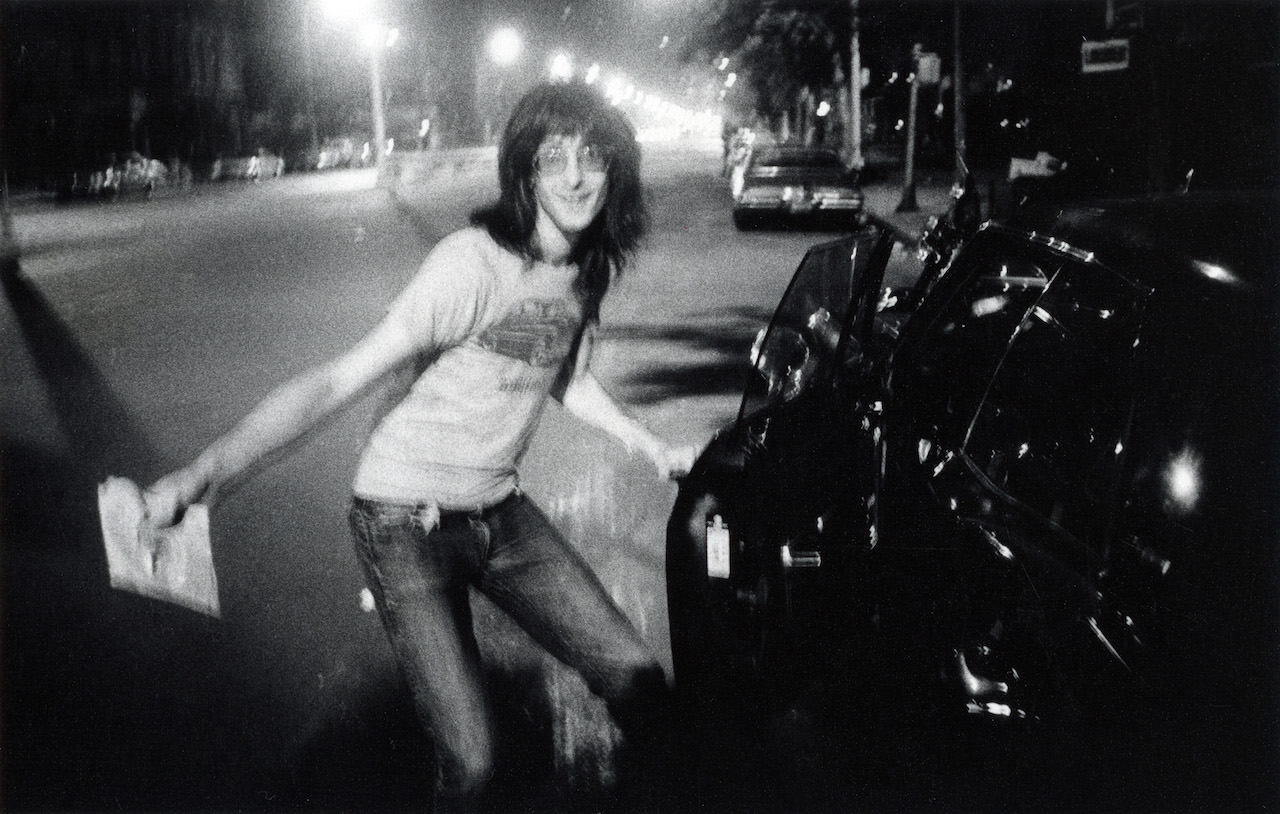
Before the CBGB sale, Hilly Kristal’s daughter, Lisa Kristal Burgman, and his ex-wife, Karen Kristal, were embroiled in a legal battle over his estate. For years, Hilly Kristal, who died Aug. 28, 2007, had fought with the landlord of the CBGB space, Bowery Residents’ Committee, over unpaid rent, which eventually totaled $90,000. The venue’s lease finally expired in 2006.
A majority of Hilly Kristal’s CBGB estate, totaling $3 million, was left to Burgman, who later sold off CBGB for good. Karen Kristal died in June 2014.
By 2014, the CBGB expansion was in full swing. Hayes brought in marketing and licensing firm Epic Rights, and launched a campaign to spread the “attitude” of the famed venue around the world.
“CBGB was the home for countless artists, misfits and rebels,” Hayes said in a statement released by Epic Rights. “No one cared what you looked like, and everyone took care of each other. In a way, CBGB became a tightly knit international family of musicians, artists and fans. The same strong spirit of CBGB continues today. We are excited to be working with Epic Rights as we expand the CBGB attitude around the world.”
Epic Rights hasn’t release any future licensing and branding plans for CBGB since 2014.
Photographer Roberta Bayley, who was the first person to work the CBGB door, and captured the scene from its earliest days, said she’s not bothered by the Newark airport restaurant.
“If it’s their intention to make it a chain, that would seem bizarre,” she said. “But I’m not offended by it as long as the food is good. If they have really terrible food that would just be awful.”
Bayley said she’s not nostalgic for CBGB anymore, but the fact that the restaurant does not have more creative names for the food on its menu is a missed opportunity.
“Why would you want to put ‘CBGB’ on your restaurant and not think of creative names?” she wondered.
Bayley also recommended re-creating the classic, CBGB bathrooms in the new establishment.
“The restaurant can have really horrible bathrooms, and that would be their thing,” she laughed. She also recommended selling CBGB T-shirts and playing punk music for customers.
Whether a theme airport bar or a re-creation of the actual venue, nothing can taint CBGB’s history or legacy, said Kaye, because it could never be the same.
“I don’t think it tarnishes the legacy of the club,” he said, “because the club’s legacy has gone around the world several thousand times, birthed thousands of bands, provided a sense of inspiration for finding yourself and creating a scene around that self and watching it grow. However, it asserts itself into the public consciousness, it will never be how CBGB’s was then. But if somebody has a little memory flash of it as they are walking to Gate 103, why not?”
John Holmstrom, co-founder of PUNK magazine, said that any future incarnations of the classic club, like the new Newark restaurant, really don’t matter in the grand scheme of the CBGB legacy.
“I made peace with CB’s, and we tried to save it,” said Holmstrom, who was involved in the Randall Miller-helmed 2013 “CBGB” film, featuring the late Alan Rickman as Hilly Kristal.
“When you think about the roster of talent that hung out at CBGB…there’s no place like it in the world,” he said during the recent Howl! punk panel.
PUNK co-founder Legs McNeil echoed Holmstrom’s sentiments.
“I don’t think it matters anymore,” he said. “It’s ludicrous. No one ever wanted it when it was real and authentic. It’s like when we wait for someone to die.”
For anyone who lived the real CB’s, anything that opens now will never be the same, said Kaye. But as the “brand” of CBGB continues to grow, an airport restaurant clearly won’t be the last physical incarnation of the venue.
“CB’s is a well-documented success story,” Kaye said. “The real blessing of CB’s is that it made its mark on the culture of rock ’n’ roll. It was a moment in time and space.”
Kaye said he’ll stop into the CBGB restaurant on the way through Newark again.
“I might try the burger,” he said. “I want see if it’s like the one Karen Kristal made for me back in 1974.”
